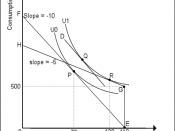Introduction:The literature review considers the issues related with the part-time casual work force which has increased rapidly in the past 20 years (Pocock; Buchanan; Campbell 2004). Currently 2 million Australians are employed as casual workforce. This structural change in the Australian workforce and the issues related to it like inferior jobs, inferior rights and low job security have gained attention amongst government, businesses, union leaders, some industrial tribunals and labour market researchers.
This literature review focuses on the employee rights, problems of the employees, the various causes of these problems, the policy options which can be worked out for these casual workers.
We will further look in the background of the topic. In the last few years the structure of Australian workforce has dramatically changed. There has been a steady increase in casual work force density, over all between 1990 to 2000 the density of casual work force Rose from 19% to 27% (Campbell & Burgess 2001).
Between 1985 and 2002, the proportion of casual workers in manufacturing doubled, and in communications, finance and insurance, the proportion more than trebled (Watson 2003).
The number of jobs with inferior rights and benefits has increased rapidly in Australia over the past twenty years. One in four Australians are now employed on casual terms. Casual employees miss out on important employment conditions with low hours and pay rates, limited job security, unpredictable earnings and hours, no paid sick or holiday leave, and limited access to other rights and forms of leave. (Pocock; Buchanan; Campbell 2004)Many have difficulty borrowing money, predicting childcare needs, and managing finances. Over time, an economy dependent upon a larger and larger slice of casual employees will face a deteriorating skills base, lower workforce stability and higher turnover costs. This is both inefficient and inequitableFurther more we will try to...



Good job
Has good structure and lots of references.
0 out of 0 people found this comment useful.